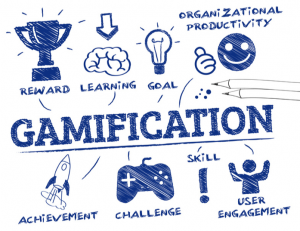
If 28 million people harvest their crops on Farm Ville every day and over 5 million people in the world play videogames for 45 hours a week, why can’t we use some elements of video games for educational purpose? As Werbach & Hunter state, gamification is a technique based on using “game elements and game design techniques in non-game contexts.”[1]
It has been used successfully in business but in recent years it has gained importance even in language teaching. Including some of the features of gamification in standard language lessons is a good opportunity to engage students and to empower the learners with motivational skills. This doesn’t mean transforming lessons into video games but even a grammar exercise can become challenging and engaging if enhanced with some features of gamification.
Reward is one of the main characteristics. People like rewards whether they are tiny pictures on the screen or public recognition in class. Kahoot is a great way to revise grammar with game elements but also a normal exercise when boosted with public recognition, unexpected bonuses (no homework for the following lesson) and possibility of unlocking new content can become far more engaging. Another important feature to consider for language classrooms is challenge. Giving students time-based elements or exercises (Quizlet is a good example of this), involving problem solving and social engagement can transform common exercises into a fun activity. An interesting example for this is the so-called Station Learning – many stations, a given time but the freedom to choose how to deal with the different exercises or tasks provided. Among the many features of gamification, the most important with high school students is the last one: user engagement. If students realize they are the real leaders and they are free to choose what to learn and how to learn it, every activity will be successful.
[1] Werbach K. (2014) (Re)Defining Gamification: A Process Approach. In: Spagnolli A., Chittaro L., Gamberini L. (eds) Persuasive Technology. PERSUASIVE 2014. Lecture Notes in Computer Science, vol 8462. Springer, Cham.



